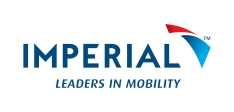As anyone who has gone through a software audit will be aware, understanding the complexities and implications of compliance isn’t simply black and white. There are many shades of grey that depend on a variety of factors including the different terms and conditions and licensing policies, various agreement types, and the nuances of a particular business. “A common thread among these pain points is an acute need for the right support as well as sufficient time and resources to get the job done,” says Marilyn Moodley, Country Leader for South Africa and WECA (West, East, Central Africa) at SoftwareONE. She says it’s time for businesses to adopt a different outlook and strategy when preparing for software audits.
“The number of risk assessments and audits isn’t decreasing. Software programs often come with complex licensing policies, which makes keeping up with the terms included and any potential changes from software publishers such as Oracle, SAP, IBM, and Microsoft a real challenge. Given this complex picture, it’s crucial to have a clear overview and a smart analysis of your IT infrastructure. Choosing the right partner to assist has a tangible impact on the bottom line by preventing costly penalties and wasteful software spending,” explains Moodley.
She says having a comprehensive advisory service in place provides a roadmap that meets all software needs while being cost-effective. By doing so organisations can stay one step ahead of software audits and proactively solve IT compliance issues before they happen.
Lacking a clear and consistent software asset management process leaves businesses vulnerable to becoming non-compliant and exposing themselves to large fines. The IT asset management journey should however start long before such an event occurs. The first step is creating an overview of your software assets and getting expert guidance on optimising your infrastructure, getting clarity around licensing metrics, and uncovering how each product is being used, which can lead to cost reduction opportunities,” notes Moodley.
Companies need ways to reduce compliance risks and the headache of unbudgeted costs. “To this end, key questions include: what are the most cost-effective methods of purchasing various software? And, perhaps most importantly of all, are the products and quantities licensed even suitable for the business need?” she says.
Another consideration when trying to reduce costs is the various software vendors’ fiscal year-end. It’s around this time that most companies sign contracts with software publishers, usually with high discounts. Although it might seem like a great deal at first, companies come to realise that more often than not they end up with shelfware, or paying support fees for licenses they don’t actually need. “It’s important to bear in mind that the support renewal fees are typically only a portion of a company’s total IT spend. Do you know where the rest of your spending is coming from? It’s not unusual for companies to lack a good overview of where the money goes and the good news is, it’s not impossible to find out,” she adds.
Instead of another tick-box exercise, Moodley says preparing for software audits should be seen as an opportunity to better optimise, manage, and maintain a business’s most critical assets which can be used as a blueprint for an eventual cloud migration strategy.
“Ultimately managing your software licensing estate, be it on-premise or in the cloud, is not an easy job and requires a lot of expertise. It’s imperative that companies choose the right partner who can offer the right expertise, from providing baseline analysis to defining a cost savings strategy, supporting during a software audit or managing the full software lifecycle on-premise and in the cloud,” she says.


























